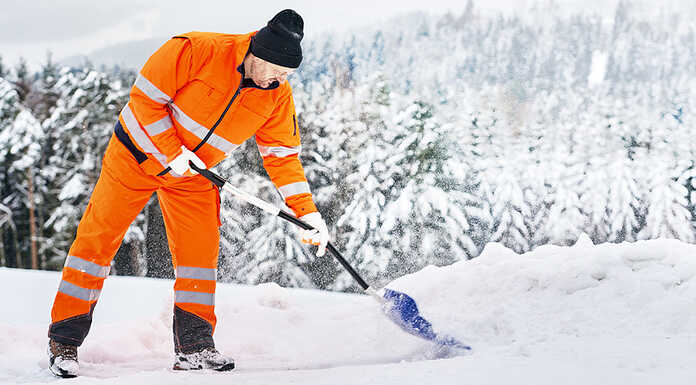Follow these tips to help cold-weather workers plan, prepare, and prevent major injuries that can result from hypothermia and frostbite.
Hypothermia
According to the Mayo Clinic, hypothermia is a medical emergency that occurs when your body loses heat faster than it can produce heat, causing a dangerously low body temperature. Our normal body temperature is around 98.6 F, and hypothermia occurs as your core temperature drops below 95 F. Prolonged exposure to or immersion in cold weather is often the cause of hypothermia. Still, prolonged exposure to any environment that is colder than your body can lead to hypothermia if you’re not dressed appropriately or cannot control the conditions.
There are several ways your body loses heat, including radiation, unprotected skin surfaces, exposure to the elements, and direct contact with a cold surface, such as the ground or cold water. Wind can also remove the thin warm air next to your body.
Prevent Hypothermia with these Steps
There is an acronym for staying warm and preventing hypothermia: COLD. Easy to remember, right?
- Cover – Wear a hat or other protective covering to prevent heat loss from your head and neck areas. Wear mittens instead of gloves. Keeping the fingers together helps to keep them warmer.
- Overexertion – Minimize activities that would cause you to sweat. Wet clothing and cold conditions can cause you to lose heat faster than it can be generated.
- Layers – Dress in layers of loose-fitting, lightweight clothing. Wool, silk, or polypropylene hold heat and wick moister away from the body better than cotton.
- Dry – Stay as dry as possible. Get out of wet clothing as soon as possible. Be especially careful with mittens and boots.
Frostbite
Frostbite is an injury caused by the freezing of the skin and underlying tissues. The most common cause is exposure to cold-weather conditions, but it can also be caused by direct contact with ice, freezing metals, or very cold liquids.
There are several stages of frostbite.
- Frostnip is a mild form of numbness in the affected area. As your skin warms, pain and a tingling sensation may occur, but there is no permanent skin damage.
- Superficial frostbite will cause a slight change in skin color. The skin may begin to feel warm, and you may notice stinging, burning, and swelling. Blisters may appear 12-24 hours after rewarming the skin.
- Severe frostbite affects the deeper layers of the skin and underlying tissues. The affected area turns white or blue-gray, and you lose all sensation of cold, pain, and discomfort. Blisters will appear 24-48 hours after rewarming, and the tissue turns black as it dies.
As with hypothermia, there are ways to prevent frostbite.
- Limit time outdoors in cold, wet, and windy conditions.
- Dress in layers of light, loose, warm clothing. Choose undergarments that wick moisture away from the body. Remove wet clothing as soon as possible.
- Wear a hat or headband to cover your ears. Choose mittens rather than gloves. Wear insulated socks or liners that wick moisture away. If using hand or foot warmers, make sure your boots aren’t too tight as this restricts blood flow.
- Eat well, stay hydrated, and avoid alcohol.
- Keep moving to help keep the blood flowing, but watch for overexertion and avoid sweating.
Both hypothermia and frostbite are preventable with proper planning. Dress appropriately for the activity, pay attention to the weather forecast, and postpone or limit outside activities. Keep snacks such as granola or protein bars handy if traveling in a vehicle. Have extra clothing and blankets or a sleeping bag in case you get stuck or stranded. To avoid carbon monoxide build-up inside the vehicle, slightly open a window, run the vehicle for ten minutes every hour, and make sure the exhaust is clear.
So, whether it’s work, traveling for work, or just enjoying outdoor recreation during the winter, make sure your employees know the signs and symptoms of hypothermia and frostbite, how to prevent it, and how to stay prepared.

















